MILITARY PERSONNEL
2nd Lt Ralph Clark

Ralph Clark had been a 2nd lieutenant since enlistment in 1779. He’d served in the American Revolutionary War, returning to love in London. He married Betsy in June 1784 and had his first son in August 1985. He volunteered to serve in the New South Wales Marine Corps and travelled to Sydney on the Friendship, a ship with largely female convicts.
His duties included guarding convicts and serving on the Criminal court. He also hunted and fished, sending specimens back to England. He kept a vegetable garden on a small island in Port Jackson (the island is now known as Clark Island). Most of this produce was quickly stolen and he eventually stopped attempting to keep a garden.
He was friendly to the local Eora tribe. In February 1790 he was asked by the governor to capture two aboriginal tribesmen he had previously traded with, but refused for fear their children would starve.
In March 1790 he was sent to serve in Norfolk Island with Major Ross. The ship was wrecked on an offshore reef after landing. He was made quartermaster general and keeper of the stores, running the settlement at Charlotte Field, and, later in April 1791 he laid to the settlement of Queensbrough. During that time he impregnated a female convict, Mary Branham, and they had a daughter born in July 1791 (named Alica, his wife’s middle name). He returned to Sydney accompanied by Mary Brenham in December 1791, then back to England, arriving in 1792. It does not seem that they remained together after his return to England.
He left for the west Indies in 1793, bringing his 8 year old son along with him to serve as a midshipman. His wife died early in 1794 while giving birth to a stillborn child. He was killed in action off the coast of the Hisaniola in June 1794, while his son died of yellow fever towards the end of the same month.
He also kept a diary from 9 March 1787 to 17 June 1792, also keeping a letterbook in which copies of many of his letters to family and other officers were pasted. His diaries and papers were preserved by his wife’s family after his death, and were purchased by the State Library of NSW – now digitised.
Arthur Phillip, RN
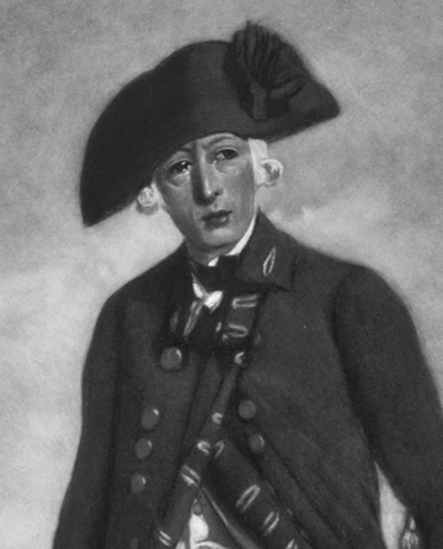 Arthur Phillip served in a whaling ship, as a captain’s servant, in the Portuguese navy, and as part of a survey team of French navy arsenals before being appointed commodore of the first fleet.
Arthur Phillip served in a whaling ship, as a captain’s servant, in the Portuguese navy, and as part of a survey team of French navy arsenals before being appointed commodore of the first fleet.
Disputes were ongoing with the New South Wales Marine Corps – as commander in chief he was technically in command of both naval and marine forces but the marines, encouraged by Major Robert Ross and his officers often refused to do anything other than guard duty, claiming they were neither gaolors, supervisors nor policemen. Ross regularly sent complants of the governor’s actions to the Home Office. Eventually the problem was resolved by transferring Ross to Norfolk Island on 5 March 1790 to replace the commandant there. The New Soth Wales Marines were relieved following the arrival of HMS Gorgon, with a newly formed British Army regiment, the New South Wales Corps.
In 1792 he relinquished the governorship to Major Francis Grose. He departed for England in December 1792 in poor health, and once arriving back in Britain, on medical advice he formally resigned on 23 July 1793. His estranged wife Charlotte had died in August 1792. He married Isabella Whitehead on 8 May 1794. His health recovered and he was recommissioned – in March as commander of the 74-gun HMS Alexander. After serving on two other ships he became part of the Impress Service, touring outposts of Britain to report on their strengths. He suffered a stroke in 1808 which left him partially paralysed, and died on 31 Aug 1814 at his residence in Bath.
His grave was forgotten til 1897 when his name was found under the matting on the floor of St Nicholas Church, Bathampton. Geoffrey Robertson QC has alleged that the remains have been moved, but as service of remembrance is held at the church around Phillip’s birthdate by the Britain-Australia Society.
Maj Robbie Ross, RM
Born in Scotland, he’d joined the marines in June 1756 at age 16 and been present at the siege of Louisberg and the capture of Quebec during the Seven Years War between Britain, France and Spain (1756-1763). He saw action at Bunker Hill in June 1775 during the American War of Independence and was aboard the HMS Ardent in August 1779 when it was captured and was taken prisoner by the French.
He travelled to New South Wales on the Sirius in the company of his 8 year old son Alexander John Ross (known as Little John), with the temporary rank of Major (this rank was later withdrawn when he returned to England). He was in continuous conflict with governor Arthur Philip, described by Ralph Clark as “without exception the most disagreeable commanding officer I ever knew”. Refusing to allow the marines to supervise convicts at work, or allow marine officers to sit as members of the criminal court, he also criticised Phillip for not building fortifications (while simultaneously creating difficulties in Philllip’s attempts to build barracks). He gave his son a commission as second lieutenant (at age 9).
To prevent open conflict, Phillip sent Ross and his son to Norfolk Island in March 1790. Norfolk Island had been settled for two years as an auxiliary site, more suited to growing New Zealand Flax (Flax and hemp for Naval Cordage and sailcloth was in short supply as the previous Russian supply had been restricted by Empress Catherine II). Ross proclaimed martial law for four months and frequently quarrelled with his officers. He returned to Sydney in December 1791, quarrelled and fought a duel with an officer of the newly arrived New South Wales Corps (with neither party being injured). Shortly after he and most of the marines returned to England on the HMS Gorgon. He was returned to captain-lieutenant and removed from active command. He served as a Marines Recruitment officer in St Albans, dying on 9 June 1794. His son was only 20 when he died in 1800.
Captain Watkin Tench, RM
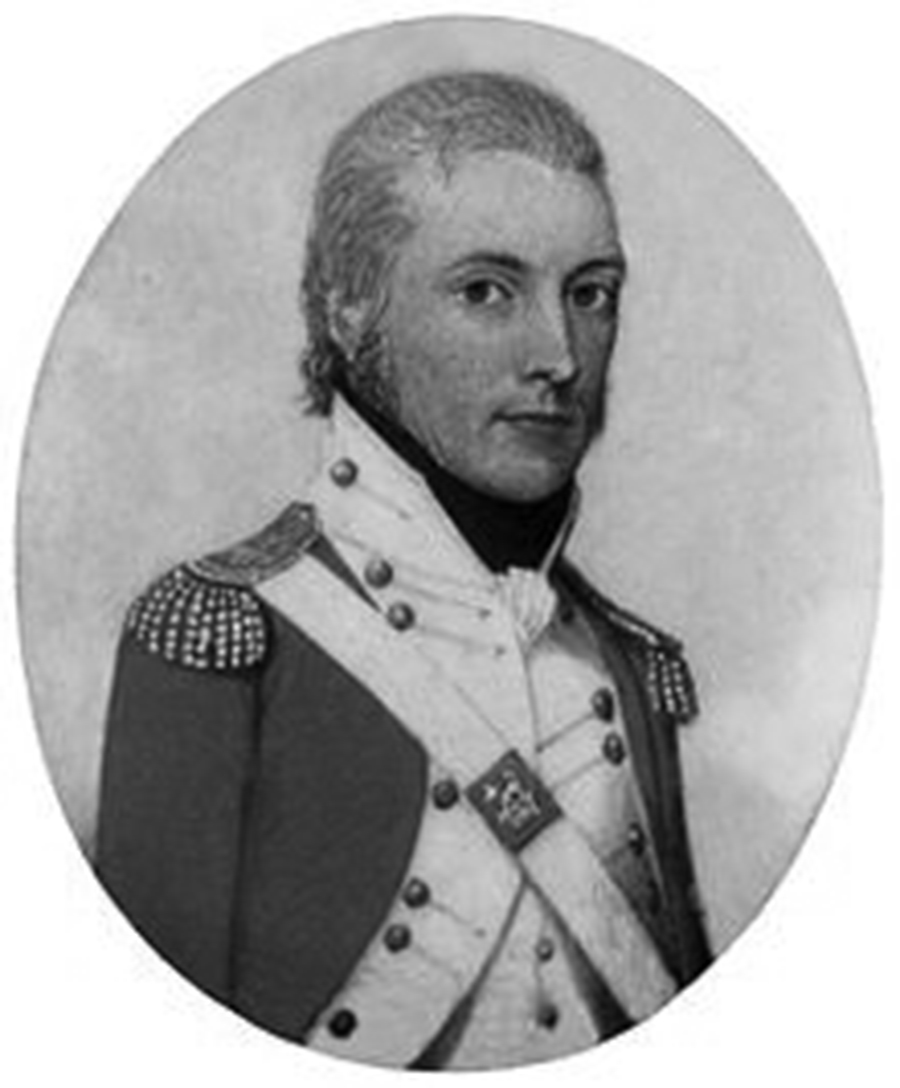
Tench had served in the American War of Independence and was captured when HMS Mermaid was driven ashore on the Maryland coast in July 1778. He was in command of the Royal Marine unit on board HMS Mermaid, and was transported to Philadelphia, imprisoned and exchanged in October 1778. He’d served in the West Idies and been promoted to Captain Lieutenant before retiring on half pay in May 1786. He reapplied when the Admiralty called for volunteers to a three-year tour forming the New South Wales Marine Corps, was accepted in Decenber 1786 and sailed on the transport “Charlotte” in May 1787. Hed already made arrangements to write a book describing his experiences of the voyage and the early months of the colony. The manuscript was sent back to England in July 1788 and was published as “Narrative of the Expedition to Botany Bay” in 1789, running to multiple editions and being translated into French, Dutch, German and Swedish.
He was the first European to encounter the Nepean river. He wrote about the Gadigal and Cammeraygal people, writing in a condescending manner against the idea of the “noble savage” then popularised by Jean-Jacques Rosseau. He sailed back with most of the rest of the marines in 1791 on the Gorgon with a draft for a second book, “Account of the Settlement of Port Jackson – published in 1793. Tench was married in 1792 and served under Admiral Richard Rodney Bligh (William Bligh’s third cousin) in the blockade of Brest. He and Admiral Bligh were imprisoned by the French for six months, during which time Tench wrote his third book, “Letters written in France to a Friend in London”. He returned to service escorting convoy ships in the Atlantic and Channel on HMS Polyphemus, rejoining the Channel Blockade on the HMS Princess Royal for 1801-1802. He then served onshore until retiring with the rank of Major General at the end of 1815.
He returned to service as a commandant in the Plymouth division in 1819. He and his wife had no children of their own but took responsibility for three nephews and a niece when the children were orphaned in 1821. He finally retired with the rank of lieutenant general in 1827 and died in 1883.
Captain David Collins, RM
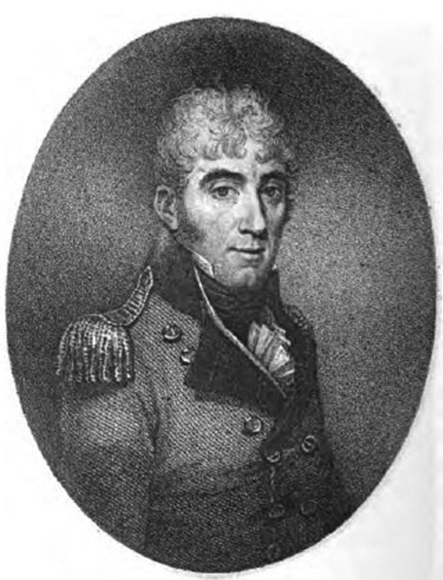
David Collins had served as a British marine since 1770 (enlisting at age 14), and served in the American Revolutionary War in the Battle of Bunker Hill in 1775, meeting his wife Maria in Boston in 1776. He volunteered for service as part of the New South Wales Marine Corps and despite a lack of legal Training he was named Judge Advocate for the new colony and chief judge of the military court administering the New South Wales Marines Corps. In June 1788 Governor Phillip appointed him ass Secretary to the Governor. He returned to England in 1796, but came back to establish a new colony south of Sydney
He established the first short-lived colony in Victoria at Sullivan Bay on Port Phiilip, in 1803 but found the site unsatisfactory. After getting permission from Governor King, he moved the colony to the Derwent River on Van Diemen’s Land (Tasmania), establishing what is now Hobart. He remained Lieutenant Governor of the colony until 1810, dying in suddenly while in office. He was buried in full military honours on the spot intended for a church. St David’s Cathedral in Hobart bears his name.
Captain Jemmy Campbell, RM
Jemmy Campbell was one of the more disgruntled officers, sending two letters home that were strongly critical of the governorship of Arthur Phillip. He was critical of the settlement and doubted it could succeed. He sent natural history specimens including a kangaroo skin and drawings by Captain John Hunter back to his patron, Lord Dulcie.
Like most of the Marines, he returned to England on the Gorgon in December 1791.
Lieutenant George Johnston, RM
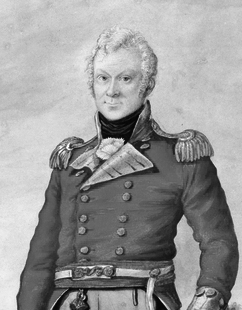 Johnston served as adjutant to Governor Phillip and was promoted in 1789 to the rank of Captain-Lieutenant. Lt Johnston moved over to the New South Wales Corps when the Marines departed in 1791, taking the rank of Captain. He received extensive land grants in Petersham, Bankstown, Cabramatta and Annandale (the last was the name of his property, based on his birthplace in Annan, Scotland). He became aide-de-camp to Governor John Hunter in 1796, but in 1800 he was arrested by Lieutenant Governor William Paterson for “paying spirits to a sergeant as part of his pay – and disobedience of orders”. After Johnston objected to being court-martialled in the colony, he was sent back to England – as the witnesses were still in Australia, the proceedings were dropped and he returned in 1802. He took temporary command of the New South Wales Corps in 1803, and permanent command in 1804.
Johnston served as adjutant to Governor Phillip and was promoted in 1789 to the rank of Captain-Lieutenant. Lt Johnston moved over to the New South Wales Corps when the Marines departed in 1791, taking the rank of Captain. He received extensive land grants in Petersham, Bankstown, Cabramatta and Annandale (the last was the name of his property, based on his birthplace in Annan, Scotland). He became aide-de-camp to Governor John Hunter in 1796, but in 1800 he was arrested by Lieutenant Governor William Paterson for “paying spirits to a sergeant as part of his pay – and disobedience of orders”. After Johnston objected to being court-martialled in the colony, he was sent back to England – as the witnesses were still in Australia, the proceedings were dropped and he returned in 1802. He took temporary command of the New South Wales Corps in 1803, and permanent command in 1804.
In January 1808 he had a key role in the Rum Rebellion, leading the troops that deposed Governor William Bligh. He assumed the title of Lieutenant governor and suspended the judge-advocate and other officials. He was arrested on 28 July and returned to England with co-conspirator John Macarthur, along with a witness. His court martial was held in May 1811. He was found guilty of mutiny and was cashiered out of the Corps.
He returned to Sydney in May 1813. In 1814 he married Esther Abrahams, a Jewish convict who he’d known since she was transported on the same ship as him. They had already had 7 children together. He died in 1823, first buried on a private mausoleum on his Annandale property, his remains were moved when the suburb was subdivided and moved to Waverly Cemetery in 1904The suburb of Georges Hall is named after the farmhouse on one of his properties, which still stands. The gates of their original property at Anandale are now on the grounds of Annandale Public School.
Lieutenant William Dawes, RM
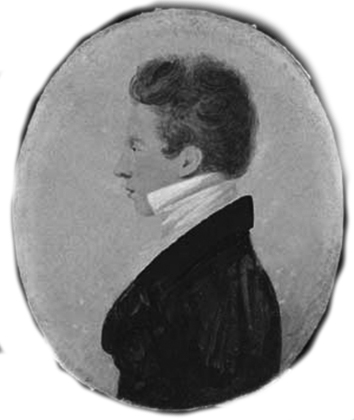 Dawes was asked to establish an observatory and make astronomical observations on the voyage to Sydney and in New south Wales. From March 1788 he started working as an engineer and surveyor, building the first Sydney Observatory on what is now Dawes Point. He constructed batteries on the points at the entrance to Sydney Cove, laid out the government farms and first streets in Sydney and Paramatta, and was part of several explorations beyond the Nepean river, including the first attempt to cross the Blue Mountains.
Dawes was asked to establish an observatory and make astronomical observations on the voyage to Sydney and in New south Wales. From March 1788 he started working as an engineer and surveyor, building the first Sydney Observatory on what is now Dawes Point. He constructed batteries on the points at the entrance to Sydney Cove, laid out the government farms and first streets in Sydney and Paramatta, and was part of several explorations beyond the Nepean river, including the first attempt to cross the Blue Mountains.
He also studied the local Eora people, forming a relationship with a fifteen year old native girl, Patyegarang. She stayed in his hut, serving as language teacher, servant and perhaps lover. He became an authority on Aboriginal languages. Governor Phillip offered him a role as an engineer full time in 1791, but only if he would apologise for two insubordinate incidents (one involving purchase of flour from a convict during a food shortage, the other refusing to be involved in a punitive expedition against Aboriginals). Dawes refused to apologise and left with the remaining Marines on the Gorgon in December 1791. He applied to return to the colony as a settler but never returned.
In 1792 he joined an evangelical sect, travelling with John Clarkson to Sierra Leone, a colony set up for African Americans who had been promised their freedom for serving Britain in the American War of Independence. Dawes struggled with the conflicts between the colonists and the Colonial Governor, John Clarkson – his administration was called high-handed and one of the Methodist ministers referred to Dawes as “Pharaoh”, invoking the story of Moses to encourage the people of Sierra Leone to resist his governance.
His health suffered and he returned to England in March 1794. He was married during this time, but went back to Sierra Leone to serve as Governor in January 1795, remaining until March 1796. In January 1799 he started working as an instructor of mathematics, staying until November 1800. He returned to Sierra Leone to serve again as governor from early 1801 to February 1803.
He returned to England in 1804 and started training Missionaries for the Church Missionary Society. He worked alongside William Wilberforce against the slave trade in Antigua. He founded and operated schools for the children of slaves. Unfortunately by 1826, his financial situation had become so precarious he petitioned the Secretary of State for the Colonies asking for payment for extra services rendered in New South Wales. This claim was supported by Watkin Tench, but was ultimately unsuccessful. He died in Antigua in 1836.
2nd Lieutenant William Faddy
Faddy was part of the crew sent to Norfolk Island in March 1790. Ralph Clark took his side in an altercation between Faddy and Lieutenant Robert Kellow which ended in a duel between the two men in June 1790. He was part of the Marines returned to England on the Gorgon in December 1791. He was promoted to captain Lieutenant in July 1797 and served on the Vanguard from that year until the Battle of the Nile in 1798, dying in action on the first day of conflict, 1 August.
Midshipman Harry Brewer
Harry Brewer joined the navy as a volunteer at age 40 for reasons he’d never discuss. He’d met Arthur Phillip while both were serving on HMS Alexander. He came out with Phillip as his clerk. Phillip appointed him as provost-marshal (in charge of Military police). He acted in the role pending British government approval, which took 4 years. He initially served as building superintendant, but in later years he directed the convict constabulary and acted as impounding officer. Towards the end of 1795 his health failed and he was incapable of carrying out his duties. He died in July 1796. Brewer Street, Concord, marks approximately the southern boundries of the 50 acres granted to him in 1793.
Reverend Richard Johnson
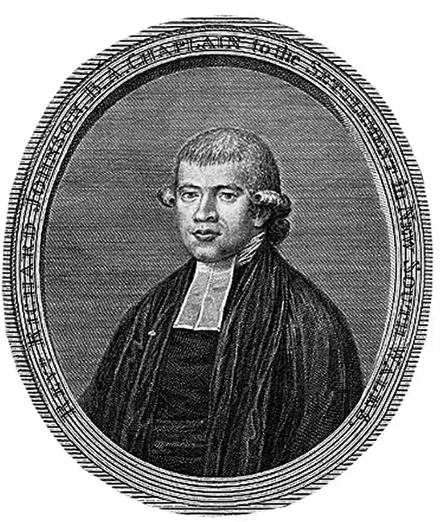
Ordained in 1783, he and his wife came to Sydney on the Golden Grove, conducting a service every Sunday and reading prayers every evening. On arrival in Sydney he continued to hold Sunday services in the open air or sometimes in a large store. He and his wife started a small farm, by the end of 1788 growing enough vegetables for their own needs, planting Orange and Lemon. Their original cottage was built from cabbage tree palms and thatched rushes. He set up schools in Sydney and Parramatta and on Norfolk Island. In 1793 after continued government inaction on the construction of a promised church, he built his own, largely with his own hands. Large enough to hold 500 people, it opened in August 1973. Acting Governor Grose ordered the church service to be at 6 o’clock in the morning, cut down to 45 minutes. Soldiers turned up drunk or were marched off halfway through the service, and soldiers and convicts treated him with contempt. The dispute appeared to be largely due to religious differences – Johnson believed in and preached personal salvation, which Grose found detrimental to good order and discipline. The arrival of an assistant chaplain, Reverend Samuel Marsden, gave him the support of a stronger personality.
He returned to England in around August 1801, taking up a curacy in Kingston-upon-Hull. He continued to take an interest in Australia, appearing before the House of Commons Select Committee on Transportation in 1812. He died in 1827.
CONVICTS
Mary Branham
Mary had been sentenced at the Old Bailey for stealing two petticoats, one pair of stays, four yards and a half of cloth, one waistcoat, one cap, one pair of cotton stockings, one pair of nankeen breeches and one cloth coat- total value 39 shillings. The clothing was the property of her employer, Ann Kennedy, who had left her to mind the children while she went to Convent-Garden Market. The clothing was found at several different pawnbrokers. She was sentenced to 7 years transportation – she was age 14 when sentenced. During her transport on the Lady Penhryn she became pregnant, and her first child, William, was baptised on 20 July 1788. The father was named as William Curtis, a seaman on the Lady Penrhyn, which had sailed on to China under the charter of the East India Company. She and her son were sent to Norfolk Island in 1790. She had a daughter, Alicia, with Ralph Clark while they were both at Norfolk. She and her children returned to England on the Gorgon in December 1791. Nothing is known of her life after the return to England.
James “Ketch” Freeman
James Freeman had been charged with a highway robbery that netted him and his companion 12 shillings. He was originally sentenced to death – eventually commuted to seven years transportation. On arrival in Sydney he’d been caught stealing flour with a colleague, and was sentenced to hang on 1 March 1788. After a botched hanging two days earlier, however, Freeman was offered a pardon on condition of him becoming a public executioner. He was aged 20. He would eventually execute 15 people, including 6 marines and one woman. He was also recorded as being drunk, abusive and out of his hut after hours.
At the end of his sentence he met and married Mary Edwards, a prisoner from the Third Fleet. They would have two daughters, Mary and Bethia. The relationship wouldn’t last, and by 1800 she’d moved onto another man. He was not given a land grant after his sentence was completed. His first daughter would die in 1801. He kept working as a labourer, and is recorded in the 1828 census as James Thurman, a pauper – fellowshipfirstfleeters.org.au speculates this name was due to difficulties pronouncing his surname with missing teeth. He was living with a farmer in Richmond. He was buried in 1830 in an unmarked grave. His surviving daughter gave him ten grandchildren.
Robert Sideway
Robert Sidaway was indicated for theft of 30 shillings of goods at age 24. In 1792 he was offered a conditional pardon and in 1794 he was given a contract as baker for the troops. By 1796 he opened a 120 street theatre in Bell Row (Now Bligh Street). And produced a production of Jane Shore (written by former poet laureate Nicholas Rowe in 1714, about the mistress of Edward IV later accused of conspiracy by Richard III – in Rowe’s version she is a good woman opposing Richard’s usurpation of power). The theatre continued until 1800 when it was closed as a corrupting influence – until that time it had a successful repertoire including Shakespeare. He started a public house – by 1805 he had a licence to serve wine and spirits. He also held several fields of property growing wheat and maize. He had a defacto spouse, Mary Marshall, who had also arrived on the first fleet. She took over as publican after his death in 1809.
John Caesar (Black Caesar)
He was one of the first people of African Descent to arrive in Australia. Convicted of stealing 240 shillings, he was re-sentanced in April 1789 and his sentence increased to Transportation for life. He fled into the bush a fortnight later with a musket and an iron pot – however he was not able to sustain himself in the bush and started stealing food on the outskirts of the settlement. He was nearly caught on 26 May and on 6 June he was captured. In July, David Collins wrote “in his intellects he did not very widely differ from a brute; his appetite was ravenous, for he would in any one day devour the full rations for two days. To gratify this appetite he was compelled to steal from others, and all his thefts were directed to that purpose”. He was sent to work on Garden Island as a laboroer and was provided with vegetables. He was eventually allowed to work without chains, and escaped again on 22 December 1789 in a stolen canoe, taking a gun. He continued to rob settlers gardens and steal from local Aboriginals, who speared him on 30 January 1790. The next day he handed himself back into camp. He was sent to Norfolk Island in March 1790, eventually supporting a lot of one acre. He also had a child with fellow convict Anne Power. He left her and his daughter behind when he returned to Port Jackson in 1793. He escaped briefly in 1974 but soon returned home. He was involved in conflict with the Aboriginal warrior Pemulwuy, who was leading a resistance against the Euopean colonisation. Caesar cracked Pemulwuy’s skull in late 1795. In Decenber 1795 he escaped again, leading a gang of absconders. A reward for his capture was posted on 29 Jan 1976 of five gallons of spirits. On 15 Feb 1796 he was tracked down at Liberty Plains, and wounded. He would die of his wounds.
John Wisehammer
John Wisehammer was convicted of theft of snuff. He was transported on the Friendship. He was sentenced to receive 50 lashes for neglect of work in 1790 but fainted after 8 and was forgiven the rest. He cohabited with Susannah Milledge, another convict. Both he and Milledge spent 1790-1796 on Norfolk Island. It’s believed they may both have returned to England after the 7 years transportation was up.
John Arscott
John Arscott was transported for stealing 2 silver watches and 30 pounds of tobacco. He was in demand in the colony for his carpentry skills. He was transported to Norfolk Island, and after the wreck of the Sirius he was praised for ordering convicts off who were drunk on the contents of the ships cellar and had lit the wreck alight. He was discharged on return to Sydney and returned to carpentry. He was married in 1792 to Catherine Prior (who had been sentenced for the same highway assault Mary Bryant was part of, and had born him a shortlived son in 1788). They both planned to return to England via Calcutta in the Sha Homuzear in April 1793, but at a stop in the Torres Strait in July, he was part of a party sent ashore for supplies who were attacked by natives. He and two others survived and escaped in a small boat, sailing for Timor. Arscott and one companion arrived in Batavia in October 1794. Catherine had died the previous year in September 1793 of spotted fever. Arscott leaves no further historical records.
Dabby Bryant
Dabby, aka Mary Bryant, Aka Mary Braund, was convicted of robbing and assaulting a woman on a road in Plymouth and originally sentenced to hang with her two companions, before their sentences were commuted to seven years transportation. She conceived her first child in the Dunkirk Prison Hulk at Plymouth and gave birth on the voyage to Sydney to her first child, Charlotte. She married William Bryant on 10 Feb 1788, who had been on the prison hulk with her, and had another child with him, born on 6 May 1790. When his transportation order expired in 1791 he made a plan to escape with others by boat – escaping with Mary, the children and seven other transportees on 28 March 1791. They kept close to the coast, arriving in Timor after a voyage of 69 days. They claimed to be shipwreck survivors, but were discovered and imprisoned by the Dutch governor. They were handed over to the British and sent back to Britain to stand trial. On the voyage back William and both children died. In 1793 she was pardoned, represented by Samuel Johnson’s biographer, James Boswell. She returned to her family in Cornwell and Boswell provided her with a 10 pound stipend per year until she died in 1795. Her story has been the subject of two TV series, a play staring Leo McKern “Boswell for the Defence” and a musical by Nick Enright and David King.
Liz Morden, Duckling Smith and Meg Long
These three convict women appear to be fictitious. Keneally calls Liz “Nancy Turner”, but neither name appears on the list of First Fleet Convicts. Duckling’s real name is given in Keneally’s novel as “Ann” but none of the three women named Ann Smith appear to match the character in the play or novel. There are no female convicts with the surname Long on the lists of convicts on the first fleet.
(sources: peopleaustralia.anu.edu.au/biography;
https://www.sl.nsw.gov.au/stories/terra-australis-australia/letters-home; https://www.eoas.info/biogs/ ;
https://www.britannica.com/biography/
https://sydneylivingmuseums.com.au/
https://www.newworldencyclopedia.org
https://adb.anu.edu.au/biography/
https://en.wikipedia.org/wiki/
firstfleetfellowship.org.au

